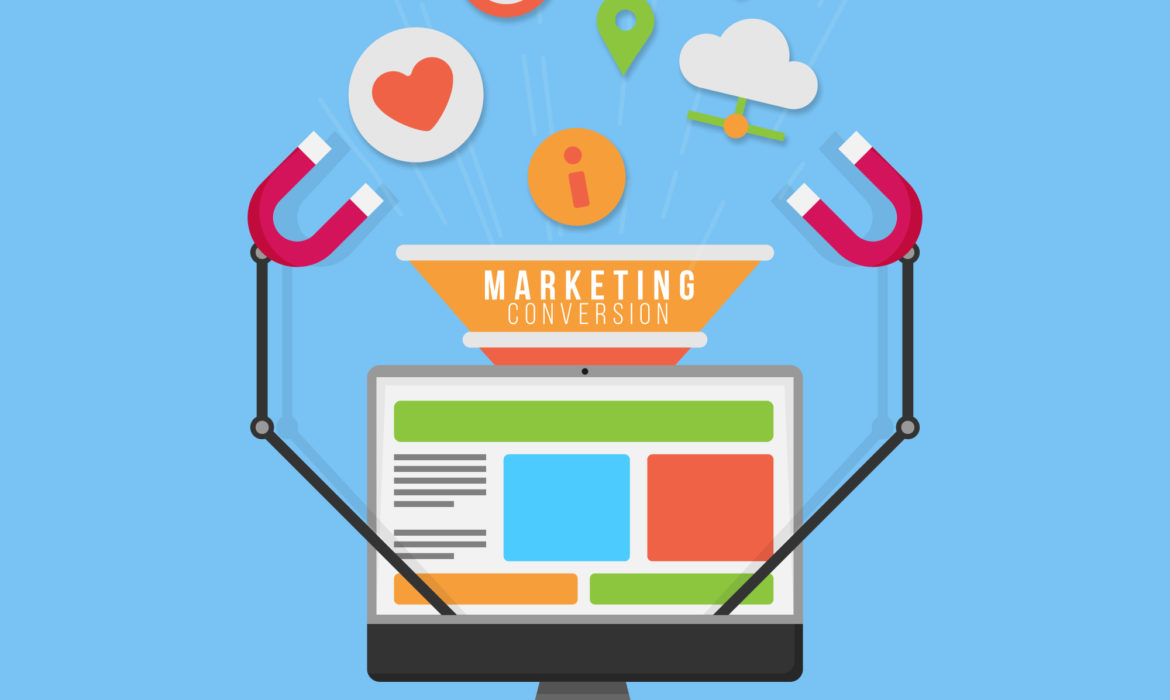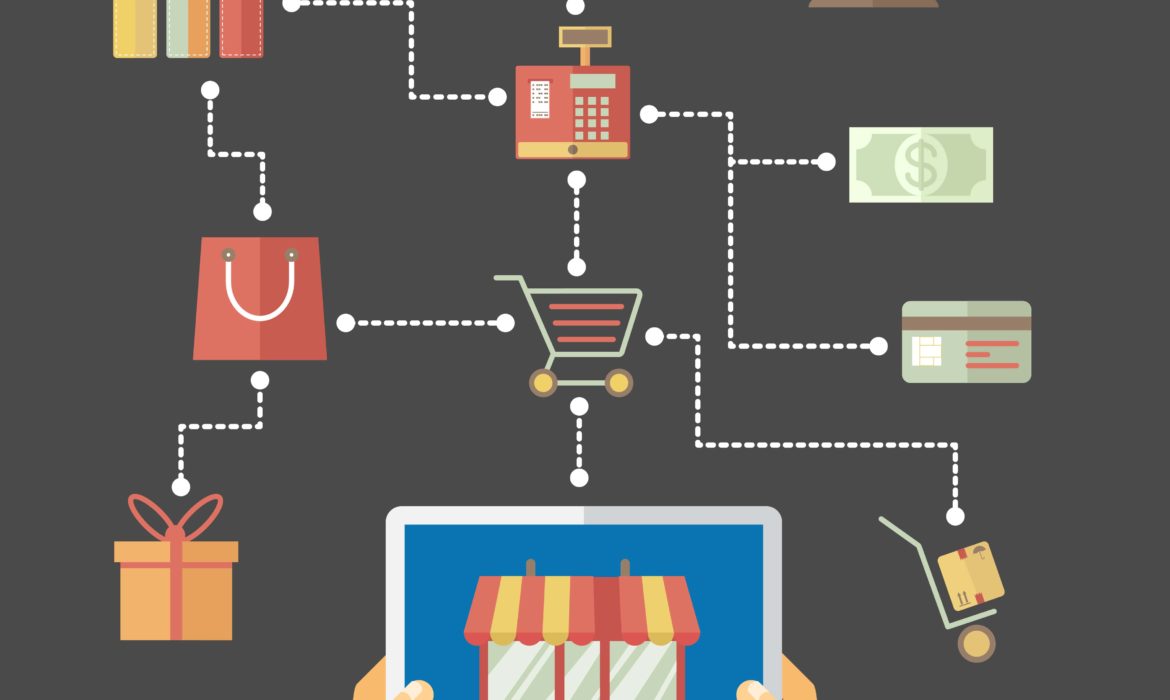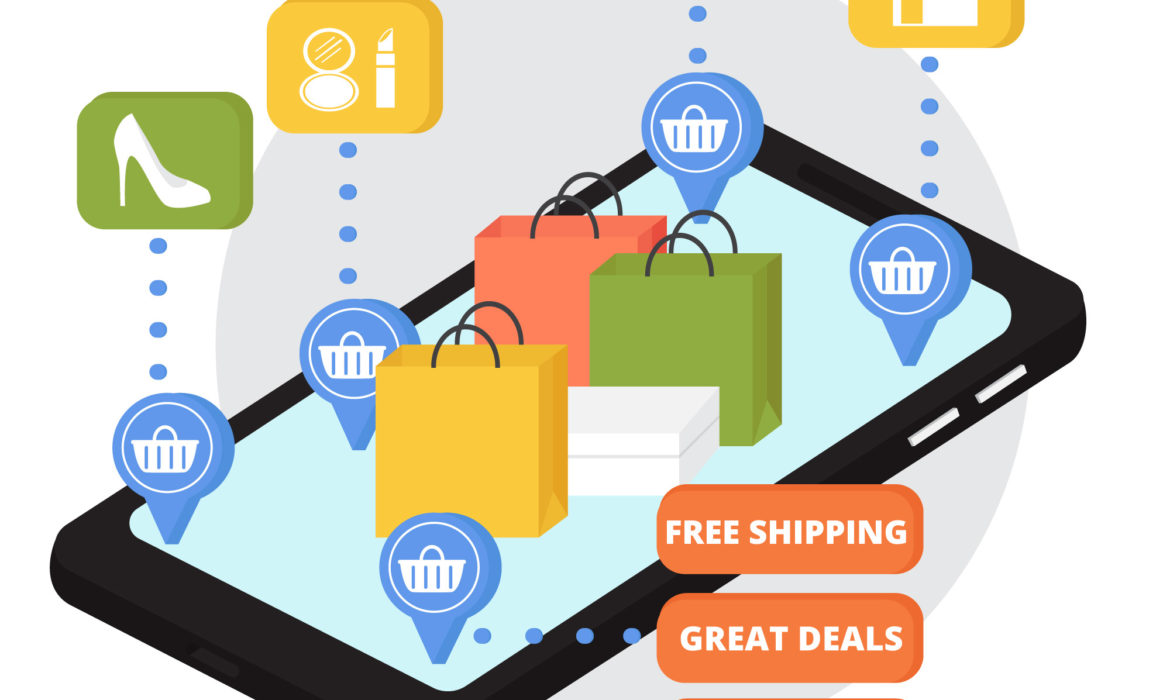By implementing these tips, you can enhance the efficiency of your inventory and fulfillment management, leading to better customer experiences and increased profitability for your e-commerce store.
Tips for Managing Inventory and Fulfillment in Your E-commerce Store
Managing inventory and fulfillment are crucial aspects of running a successful e-commerce store.Proper management ensures that you meet customer expectations, maintain a positive reputation, and optimize your business processes.
Efficiently manage inventory and fulfillment
Centralized Inventory System
Use a reliable and centralized inventory management system that tracks stock levels, product details, and sales data.
This will give you real-time visibility into your inventory, helping you make informed decisions about restocking and managing popular items.
Accurate Product Information
Ensure that product descriptions, SKUs, and other details are accurate and consistent across your platforms.
This helps prevent confusion and reduces the risk of overselling or underselling items.
Set Reorder Points and Safety Stock Levels
Determine reorder points for each product, i.e., the inventory level at which you should restock to avoid running out of stock.
Also, maintain safety stock levels to handle unexpected spikes in demand or delays in fulfillment.


Regular Inventory Audits
Conduct regular physical or digital audits to verify the accuracy of your inventory records.
Identify and address discrepancies promptly to avoid stockouts or excess inventory.
Supplier Relationship Management
Cultivate strong relationships with your suppliers to negotiate favorable terms, receive timely updates on stock availability, and resolve any issues promptly.
Streamlined Order Processing
Optimize your order processing system to reduce handling time.
Use barcode scanners and efficient pick-and-pack processes to expedite order fulfillment.
Real-Time Inventory Updates
Integrate your inventory management system with your e-commerce platform.
This ensures that product availability is updated in real-time on your website, reducing the chances of selling out-of-stock items.
Shipping Options
Offer a variety of shipping options to your customers, including express shipping for time-sensitive orders.
Clearly communicate delivery times and any potential delays.
Returns Management
Have a well-defined returns policy and process in place.
Streamline the returns process to reduce the impact on inventory and ensure customer satisfaction.
Demand Forecasting
Analyze historical sales data and seasonal trends to make accurate demand forecasts.
This will help you prepare for peak periods and optimize inventory levels.
Safety Measures for High-Value Items
If you sell high-value items, implement additional security measures, such as tracking, signature on delivery, or insurance, to protect against theft or loss during transit.
Continuous Improvement
Regularly review your inventory and fulfillment processes.
Identify areas for improvement, gather feedback from customers, and adapt your strategies accordingly.
Conclusion
Tips for Creating High-Quality Product Images and Videos
In today’s online marketplace, product images and videos are essential for selling your products.
They help customers see what your products look like, how they work, and how they can be used.
High-quality product images and videos can also help you increase your website traffic, boost your sales, and improve your conversion rate.
The Ultimate Guide to Product Photography
Use good lighting
Lighting is one of the most important factors in creating high-quality product images and videos.
The right lighting can make your products look their best, while the wrong lighting can make them look dull or even unprofessional.
There are two main types of lighting for product photography: natural light and artificial light.
Natural light is often the best option, as it produces soft, natural-looking shadows.
However, natural light can be inconsistent, so it’s important to shoot during the day when the light is most consistent.
If you’re shooting indoors, you can use artificial light to create the perfect lighting conditions.
There are a variety of artificial light sources available, including studio lights, continuous lights, and flash lights.
Compose your shots carefully
The composition of your product images and videos is also important.
The way you arrange your product in the frame can make a big difference in the overall look and feel of your images.
There are a few basic principles of composition that you can follow to create more visually appealing product images and videos.
These principles include the rule of thirds, leading lines, and negative space.
Edit your images and videos
Once you’ve taken your product images and videos, you’ll need to edit them to improve their appearance.
This may involve adjusting the brightness, contrast, and color balance of your images.
You may also want to crop your images or remove any unwanted objects.
If you’re creating product videos, you may also need to edit the audio and add titles and other text.


Market your product images and videos:
Once you’ve created high-quality product images and videos, you need to market them so that people can see them.
You can do this by uploading your images and videos to your website, social media, and product listing sites.
You can also use paid advertising to promote your product images and videos.
This can be a great way to reach a wider audience and drive traffic to your website.
Conclusion
By following these tips, you can create high-quality product images and videos that will help you sell more products and grow your business.
So what are you waiting for? Start shooting today!
The Role of Search Engine Optimization (SEO) in E-commerce.
In today’s digital age, search engine optimization (SEO) is essential for any e-commerce business that wants to succeed.By optimizing your website for search engines, you can increase your visibility and attract more organic traffic.This can lead to more sales, higher conversion rates, and a better overall ROI.
SEO: The Key to Driving Traffic to Your E-commerce Store
There are many different factors that contribute to SEO success, but some of the most important include:
Keyword research
This is the process of identifying the keywords and phrases that your target audience is using to search for products or services like yours.
Once you know what keywords you want to target, you can use them throughout your website, including in your product descriptions, titles, and meta descriptions.
On-page optimization
This involves making sure that your website is well-structured and easy to navigate.
It also includes optimizing your content for keywords, using high-quality images, and providing clear calls to action.
Off-page optimization
This involves building backlinks to your website from other high-quality websites.
Backlinks are a signal to search engines that your website is authoritative and trustworthy, which can help improve your rankings.
SEO is a complex and ever-changing field, but by following the right best practices, you can improve your website’s visibility and attract more organic traffic.


Here are some additional benefits of SEO for e-commerce businesses:
Increased brand awareness
When your website ranks higher in search results, it will be seen by more people.
This can help to increase brand awareness and attract new customers.
Improved customer experience
A well-optimized website is easy to use and navigate. Try iPlugn.
This can lead to a better customer experience, which can increase customer satisfaction and loyalty.

Lower marketing costs
SEO is a long-term investment that can pay off handsomely.
Once you have optimized your website for search engines, you can attract more organic traffic without having to spend money on paid advertising.
Tips for improving your e-commerce SEO:
Use relevant keywords throughout your website
When people search for products or services like yours, they’ll use specific keywords.
Make sure to use these keywords throughout your website, including in your product descriptions, titles, and meta descriptions.
Create high-quality content
Your website’s content should be informative and engaging. It should also be well-written and free of errors.
Optimize your images
Your website’s images should be high-quality and relevant to your products.
They should also be optimized for search engines by using alt text and titles.
Build backlinks
Backlinks are a signal to search engines that your website is authoritative and trustworthy.
You can build backlinks by guest blogging, submitting your website to directories, and participating in social media.
Track your progress
It’s important to track your progress so you can see what’s working and what’s not.
You can use Google Analytics to track your website’s traffic and SEO performance.
If you’re serious about growing your e-commerce business, then SEO is an essential investment.
The Power of Social Media Marketing in E-commerce
Social media platforms have become a crucial part of e-commerce strategies. They provide businesses with a platform to reach a wider audience, promote their products, and interact with customers.
The Role of Social Media in E-commerce
Boosting Visibility
Social media marketing can significantly increase the visibility of an e-commerce business. Try iPlugn.
By using targeted ads, SEO strategies, and engaging content, businesses can reach potential customers who may not have found them otherwise.
Enhancing Customer Engagement
Social media allows for direct interaction between businesses and customers.
This engagement can take the form of comments, likes, shares, and direct messages.
It helps businesses understand their customers’ needs and preferences, leading to improved products and services.
Driving Sales
Social media platforms can directly contribute to increasing sales.
With features like shoppable posts and direct links to product pages, customers can easily purchase from their social media feeds.


Effective Social Media Strategies:
Successful social media marketing requires a well-planned strategy.
This includes understanding the target audience, creating engaging content, and regularly analyzing performance metrics.
The Role of Influencers
Influencer marketing has become a powerful tool in e-commerce.
Influencers can promote products to their large and engaged audience, leading to increased brand awareness and sales.

Importance of Data Analytics
Data analytics plays a crucial role in social media marketing.
By analyzing data such as engagement rates, click-through rates, and conversion rates, businesses can understand what works and what doesn’t, allowing them to optimize their marketing strategies.
Future Trends
Discuss upcoming trends in social media marketing, such as the rise of social commerce, the increasing importance of video content, and the use of artificial intelligence in personalized marketing.
The Power of Content Marketing for E-commerce Businesses
In today’s competitive e-commerce landscape, content marketing has emerged as a potent tool for driving business growth and fostering customer loyalty.
By leveraging the power of compelling and valuable content, e-commerce businesses can elevate their brand, engage their audience, and boost sales.
Content Marketing Advantage for E-commerce Success
Attract new customers
Content marketing can help you attract new customers by providing them with the information they need to make informed purchase decisions.
For example, you could create blog posts that review your products, answer common customer questions, or provide tips on how to use your products.
Engage with existing customers
Content marketing can also help you engage with existing customers by providing them with valuable content that they’ll find interesting and informative.
This could include things like product tutorials, behind-the-scenes videos, or customer stories.
Build brand awareness
Content marketing can help you build brand awareness by positioning your brand as an authority in your industry.
When you create high-quality content that is relevant to your target audience, you’ll start to build trust and credibility.
This will make people more likely to choose your products or services over your competitors.


How to create effective content marketing for e-commerce businesses?
There are a few things you need to keep in mind when creating content marketing for your e-commerce business:
Focus on your target audience
The first step is to identify your target audience and what they’re interested in.
What are their pain points? What are their goals? Once you know who you’re writing for, you can tailor your content to their needs.

Create high-quality content
Your content should be well-written, informative, and engaging. It should also be relevant to your target audience.
If your content is not high-quality, people will not read it and you’ll not achieve your marketing goals.
Promote your content
Once you’ve created your content, you need to promote it so that people can find it.
You can promote your content on social media, in your email newsletter, or on your website.
Additional tips:
Use a variety of content formats
Don’t just stick to blog posts. Try using other content formats, such as infographics, videos, and podcasts.
This will help you reach a wider audience and keep your content interesting.
Optimize your content for search engines
When you create content, make sure to optimize it for search engines.
This will help people find your content when they’re searching for information about your products or services.
Track your results
It’s important to track the results of your content marketing campaigns so that you can see what’s working and what’s not.
This will help you make necessary adjustments to your strategy so that you can get the most out of your content marketing efforts. Try iPlugn.
Conclusion
Content marketing is a powerful tool that can help e-commerce businesses attract new customers, engage with existing ones, and build brand awareness.
If you’re not already using content marketing, I encourage you to give it a try.
It’s a great way to grow your business and reach new heights.
Building an Effective E-commerce Website
In today’s digital era, having an effective e-commerce website is essential for businesses looking to thrive online.
The Importance of a User-Friendly E-Commerce Website:
Enhanced Customer Experience
A well-built e-commerce website offers a seamless and enjoyable shopping experience for customers.
With intuitive navigation, clear product descriptions, high-quality images, and easy-to-use shopping carts, you can create a user-friendly environment that encourages visitors to explore your products and make purchases.
By prioritizing customer experience, you can build trust and loyalty, leading to repeat business and positive word-of-mouth recommendations.
Increased Reach and Market Expansion
An e-commerce website allows you to break the barriers of physical locations and reach customers globally.
With an online store, you can tap into a larger customer base and expand your market reach beyond geographical boundaries.
By optimizing your website for search engines and leveraging digital marketing strategies, you can attract potential customers and increase brand visibility, ultimately driving more traffic and potential sales.
4/7 Availability and Convenience
Unlike a traditional brick-and-mortar store, an e-commerce website operates 24/7, offering convenience and accessibility to customers at any time.
This flexibility enables shoppers to browse and purchase products whenever it suits them, leading to increased sales opportunities and revenue generation.
By catering to the demands of modern consumers who value convenience, you can stay competitive in the market.


Data-driven Insights and Personalization
An e-commerce website provides valuable data and analytics that can help you gain insights into customer behavior, preferences, and purchasing patterns.
By analyzing this data, you can make informed business decisions, optimize your marketing strategies, and personalize the shopping experience.
Personalization, such as recommending products based on customer preferences or sending targeted promotions, enhances customer engagement and increases the chances of conversion.
Cost-effectiveness and Scalability
Compared to traditional retail stores, building and maintaining an e-commerce website is often more cost-effective.
It eliminates the need for physical store expenses, such as rent, utilities, and staffing, allowing you to allocate resources to other areas of your business.
Additionally, an e-commerce website offers scalability, allowing you to easily add new products, expand your offerings, and accommodate growing customer demands.

Conclusion
An effective e-commerce website is a powerful tool for businesses to thrive in the digital landscape.
By prioritizing customer experience, expanding market reach, and leveraging data-driven insights, you can create a competitive advantage, drive sales growth, and establish a strong online presence for your brand.
The Art of Upselling and Cross-selling in E-commerce.
In the dynamic world of E-commerce, businesses are constantly seeking strategies to boost revenue and enhance customer satisfaction. Among the most effective tactics to achieve these goals are upselling and cross-selling.
What is Upselling and Cross-selling?
Both techniques involve suggesting additional products or services to customers during the purchasing process.
When done right, they not only increase the average order value but also offer a personalized and convenient shopping experience for customers.
In this blog, you will explore the art of upselling and cross-selling in ecommerce and the valuable insights that help you implement these strategies effectively.
The most effective steps of Upselling and Cross-selling:
Understanding Upselling and Cross-Selling
Before diving into the strategies, let’s clarify the difference between upselling and cross-selling.
Upselling refers to offering customers a more expensive or upgraded version of the product they are considering, aiming to maximize the order value.
On the other hand, cross-selling involves suggesting complementary or related products that enhance the customer’s primary purchase.
Both techniques have the potential to generate incremental revenue, but they require a delicate approach to avoid being seen as pushy or irrelevant.
Know Your Customers
The foundation of successful upselling and cross-selling lies in:
- Knowing your customers well.
- Analyze their purchase history, browsing behavior, and preferences to identify patterns and anticipate their needs.
- Utilize data-driven insights to create personalized recommendations that align with their interests and previous purchases.
- Tailoring your suggestions can significantly increase the likelihood of making relevant offers that resonate with your customers.
Strategic Product Placement:
Strategically positioning upsells and cross-sells can make a significant difference in conversion rates.
Place these offers on product pages, shopping carts, and checkout pages where customers are most likely to notice them.
Use eye-catching visuals, persuasive copy, and clear calls-to-action to entice customers to explore additional options.
A/B testing can help fine-tune the placement and design of these offers for optimal results.


Leverage Social Proof
Build trust and credibility by showcasing positive reviews and testimonials related to the upsell or cross-sell products.
Social proof reassures customers that the suggested items have been well-received by others, encouraging them to make informed decisions.
Testimonials and reviews can be strategically placed alongside the upsell or cross-sell offers to reinforce their value.
Offer Incentives and Discounts
Provide enticing incentives, such as limited-time discounts or free shipping, to motivate customers to accept your upsell or cross-sell offer.
Time-sensitive offers create a sense of urgency, prompting customers to act quickly to secure the deal.
However, be cautious not to rely solely on discounts, as this could devalue your products and potentially impact your profit margins.

Seamless User Experience
A smooth and user-friendly online shopping experience is crucial to the success of upselling and cross-selling.
Implement responsive design, intuitive navigation, and fast-loading pages to ensure customers can easily explore additional options without frustration.
Avoid clutter and excessive pop-ups that could disrupt the buying process and deter potential sales.
Post-Purchase Follow-Up
The relationship with your customers doesn’t end after the purchase. Utilize post-purchase emails to express gratitude and recommend further products or services based on their recent order.
These personalized follow-ups can foster loyalty and encourage repeat business.
Conclusion
Upselling and cross-selling are powerful tools in the ecommerce arsenal when approached with finesse and customer-centricity.
By understanding your customers, strategically placing offers, leveraging social proof, and ensuring a seamless shopping experience, you can boost your ecommerce revenue while delivering exceptional value to your customers.
Remember, the key is to provide relevant and helpful suggestions that enhance the overall shopping experience, building a loyal customer base in the process.
Building Trust and Credibility in Your E-commerce Brand.
Building trust and credibility in your e-commerce brand is essential for attracting and retaining customers.
With the increasing number of online scams and fraudulent activities, consumers are cautious about where they shop.
To establish trust and credibility, consider implementing specific strategies.
Strategies for building trust and credibility:
Provide transparent and clear policies
Ensure that all your policies, including shipping, returns, refunds, and privacy, are easily accessible and clearly communicated.
Be transparent about your terms and conditions, pricing, and any potential hidden fees.
Upload high-quality product images and descriptions
Provide high-resolution images and detailed descriptions of your products.
This helps customers know exactly what they are purchasing, reducing the chances of disappointment and returns.
Share authentic customer reviews
Encourage customers to leave honest reviews and testimonials on your website and social media platforms.
Genuine feedback from satisfied customers will enhance your credibility.


Offer secure payment options:
Show a variety of secure and trusted payment methods to reassure customers that their financial information is safe during transactions.
Display SSL certificate
Obtain an SSL (Secure Sockets Layer) certificate on your website. This encrypts customer data during transmission and assures visitors that your site is secure.

Supply customer support
Provide excellent customer support through multiple channels, such as email, phone, and live chat.
Promptly respond to inquiries and address customer concerns to demonstrate your commitment to their satisfaction.
Provide social proof
Leverage social media and influencers to showcase your products and build trust.
Show honesty in advertising
Avoid using misleading advertising practices. Be truthful about your products and services to avoid disappointing customers with unmet expectations.


Secure website
Invest in robust cybersecurity measures to protect customer data and maintain the security of your e-commerce platform.
Construct strong brand identity
Build a consistent and recognizable brand identity that aligns with your target audience’s values and resonates with them.
Provide easy navigation and user experience
Ensure your website is easy to navigate, mobile-friendly, and offers a seamless user experience.
Difficulties in browsing or purchasing can lead to distrust and abandonment.
iPlugn takes care to provide users with best user experience.
Perform loyalty programs
It works on rewarding returning customers. This encourages repeat business and builds a sense of loyalty and trust.
Conclusion
By focusing on these strategies, your e-commerce brand can establish a strong foundation of trust and credibility, leading to long-term customer loyalty and business success.
How to Write Great Description of Your Products
In E-commerce the description and the products image are the only thing that can give the customer the reality and the experience of the user to buy the product or pass it.
below are some tips to write the greatest description that can excite your customer and drive him to purchase.
Know your target audience
To write a product description you have to define your target audience ,then focus on highlighting features that may grab their attention. This process comes from understanding your buyer and knowing his characteristics in order to know how to grab his attention.
Always keep in mind how the customer sees your product with the description and expect his interaction.
Focus on the positive side
Always in the description you have to include positive things like benefits, features, and how it’s unique. Sometimes buyers may not be interested in the features as much as knowing how they can benefit from the product.


Include details in your products description
To make a good product description you should include even the small details, it shows more features and it may grab the attention of interested people.
Use easy language
The description is made for explanation, to talk more about the product or service, then it aims to make the product clear to the customer and let him know what can’t be shown by photos or product name.
Use power words
Include in your description words that grab attention and sell the product, that encourages the readers and pays them to buy.
Work on SEO
Search engine optimization is the best way to attract new customers to your products. Which is the main first step that pushes people to buy your products.
Avoid “yeah, yeah” phrases
“Yeah, yeah” phrases are phrases like (Excellent/Perfect/Amazing), which are phrases that are usually used in any description especially when not knowing what to write. It will make the reader less interested.
Avoid “yeah, yeah” phrases
“Yeah, yeah” phrases are phrases like (Excellent/Perfect/Amazing), which are phrases that are usually used in any description especially when not knowing what to write. It will make the reader less interested.
Strategy for Every Online Business
Nowadays, online business is not a choice, every business has to be online even if they serve offline, in the leadership time of technology whose main objective is to make human life easier and simpler. It’s necessary to start an online business using strategies that lead to success.
Here are some tips to start your online strategy
- Firstly, before you start, you have to make sure that your business idea has a market for it, or if you are targeting the right market. Then a market search is necessary before you choose your idea and start your business.
- Construct your business plan, that will lead you to achieve your goals, and stay focused on it.
- If your business is built to sell products, you have to build your products, you can manufacture or get it from a supplier. If your business is built on services, you choose the suitable sales method to sell your service.
- Choose your business name” create a new name that is unique”, create your own website depending on your type of business, brand your website and create your own logo, also add the payment process to your website using the suitable payment gateway.
- Start your marketing strategy
- To reach more potential customers by getting a store rank, you have to develop your SEO strategy.
- Of Course, share your work on social media platforms which will give you a big advantage with a main marketing process.
- To Create awareness, provide people with information and keep them loyal, you have to spend on promotion.
- Create your own mobile app which can engage your customers and allow you to contact and notify them.
- Work on building a community around your brand to make it popular and familiar to people.


Any business without a strategy is a business with no goals and it loses the purpose. The strategy is like a road map with identified useful stopping points on this road.
The iPlugn consultancy team can help you empower your strategy to maintain the best results from your online business.













